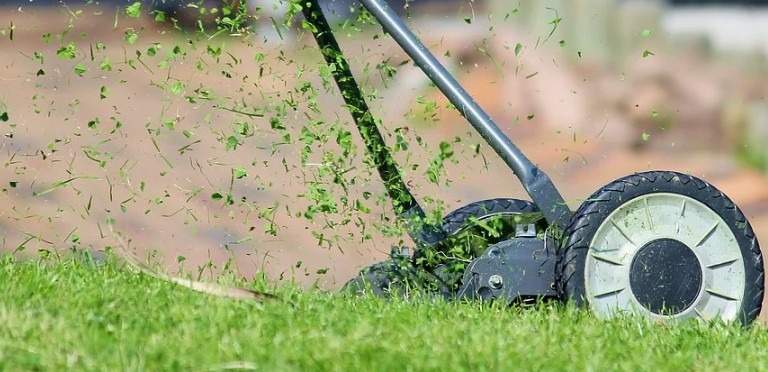We all love our yards! Don’t we? Indeed, they are one of the most important aspects of our homes as they play a significant role in giving your home a pleasant look. Having a well-maintained lawn doesn’t just induce a positive impression on your visitors, but it can actually increase the monetary value of your house as well. This is exactly why lawn care is so in trend these days!
However, we all may agree is, it’s not that easy to maintain a blissful green lawn, as easy it seems. Achieving that that perfect barefoot-worthy backyard definitely requires a lot more than just watering and mowing. It needs ample fertilizers, appropriate tools such as Lawn sweepers, and a constant battle with weeds and pests.
Unfortunately, usually, most people lack the right knowledge and experience required to maintain a lush green backyard, which eventually results in devastating mistakes. Due to such blunders, your yard may turn ugly brown or get patchy spots.
Well, we know you wouldn’t love that! Therefore, here we have mentioned the most crucial
“Don’ts” regarding lawn care, which you must avoid in all seasons!
Keep scrolling!
Our Top 7 “Don’ts” of Lawn care
1. Using Dull blades
When it comes to a healthy, shiny lawn, dull blades are a big NO! Dull mower blades are unable to slice the grass blades appropriately, but in fact, it rips it. This causes severe stress on the grass and affects its growth. Not just that, it also makes your Lawn more vulnerable to insect attacks and pests. A lawn that has been mowed with dull blades can easily be identified because it appears brown on the top.
Hence, make sure to sharpen your blades appropriately before the mowing season, to get that clean and charming look!
2. Adding too much fertilizer
Indeed, Fertilization is vital throughout the year. However, maintaining a healthy lawn is all about balance! Over-fertilizing may be tempting, but believe me, it burns your soil! The ideal fertilization proportion varies from grass types, pH levels, and is determined by a soil test. So, always make sure to have one before applying fertilizers. Going over the limit with fertilizers, such as phosphorous (P) and potassium (K), and nitrates may bring adverse side effects.
3. Using toxic insecticides and pesticides
We know that insects love your Lawn as much as you do! And, spraying insecticides and pesticides is the perfect way to keep them at bay. However, often these insect-killing chemicals are loaded with toxic compounds which might kill insecticide, but also damage the health of your grass. Alternatively, you may utilize natural ways to eliminate these pests by using a mix of vinegar, dish detergent, and vegetable oils, etc.
4. Irrigating everyday
Watering your Lawn may be cool, but overdoing it is not! Using excessive water doesn’t just waste a precious resource, but also makes your grass more prone to diseases. Watering everyday prohibits underground development of roots, which eventually creates a shallow root system. Plus, it may also wash away all your expensive fertilizers and pesticides, resulting in loss of money while damaging groundwater. To avoid such a nuisance, it would be great if you invest in n a soil moisture meter. These devices work very efficiently and will alert you once the sensor detects the right moisture level in the soil.
5. Not investing in quality seed purchase
Today a variety of grass seeds are available with each having its distinctive benefits, quality, and price points. In this aspect, people often go for the cheap purchase, which is of poor quality and lacks necessary inspection. Also, these seeds have a large percentage of weed seed mixed into it. Therefore, investing in quality seed purchase is absolutely worth it!
6. Skipping on Aerators
Usually, most lawns are planted over a relatively skimpy layer of topsoil, and over time the soils get compact, preventing air, water, and vital nutrients from penetrating through the grassroots. Aerating restores healthy soil conditions, nurtures your Lawn, and allows the grassroots to breathe. You may purchase a powered aerator, or rent one from your local rental store.
7. Cutting your grass too short
Every grass is unique in its growth rate and optimal height it reaches, depending upon its species. Usually, longer blades are far more beneficial for your Lawn than shorter ones. The primary reason for this is that grass blades are food producers so that they can generate energy in more significant amounts. Also, longer grass slows down transpiration rate, allowing more water to be retained in the grass. Hence, always make sure never to trim you Lawn too much!
Conclusion
So here it was, the 7 lawn care mistakes which you must avoid, to maintain a healthy green lawn. There are so many harmful things which lawn owners may do, and trust me, the only way to prevent them is by being well informed in this regard. We hope our article would have helped you solve your queries, and provided you with useful information. Let us know if you have any queries!

